Entries in URI’s sixth annual Research and Scholarship Photo Contest included underwater photographs, images of muscle tissue taken through microscopes, and macro shots of insects. They showcased the breadth of work that URI community members are immersed in.
This annual contest offers students, faculty, and staff an opportunity to share their perspectives of their work in any area of URI research and scholarship. Images from laboratories to libraries to the depths of the ocean and beyond have streamed in over the years and been featured in the three URI magazines sponsoring this contest—the University of Rhode Island Magazine; the URI Division of Research and Economic Development magazine Momentum: Research & Innovation; and the Rhode Island Sea Grant/URI Coastal Institute magazine 41°N: Rhode Island’s Ocean and Coastal Magazine.
The winners are:
First Place
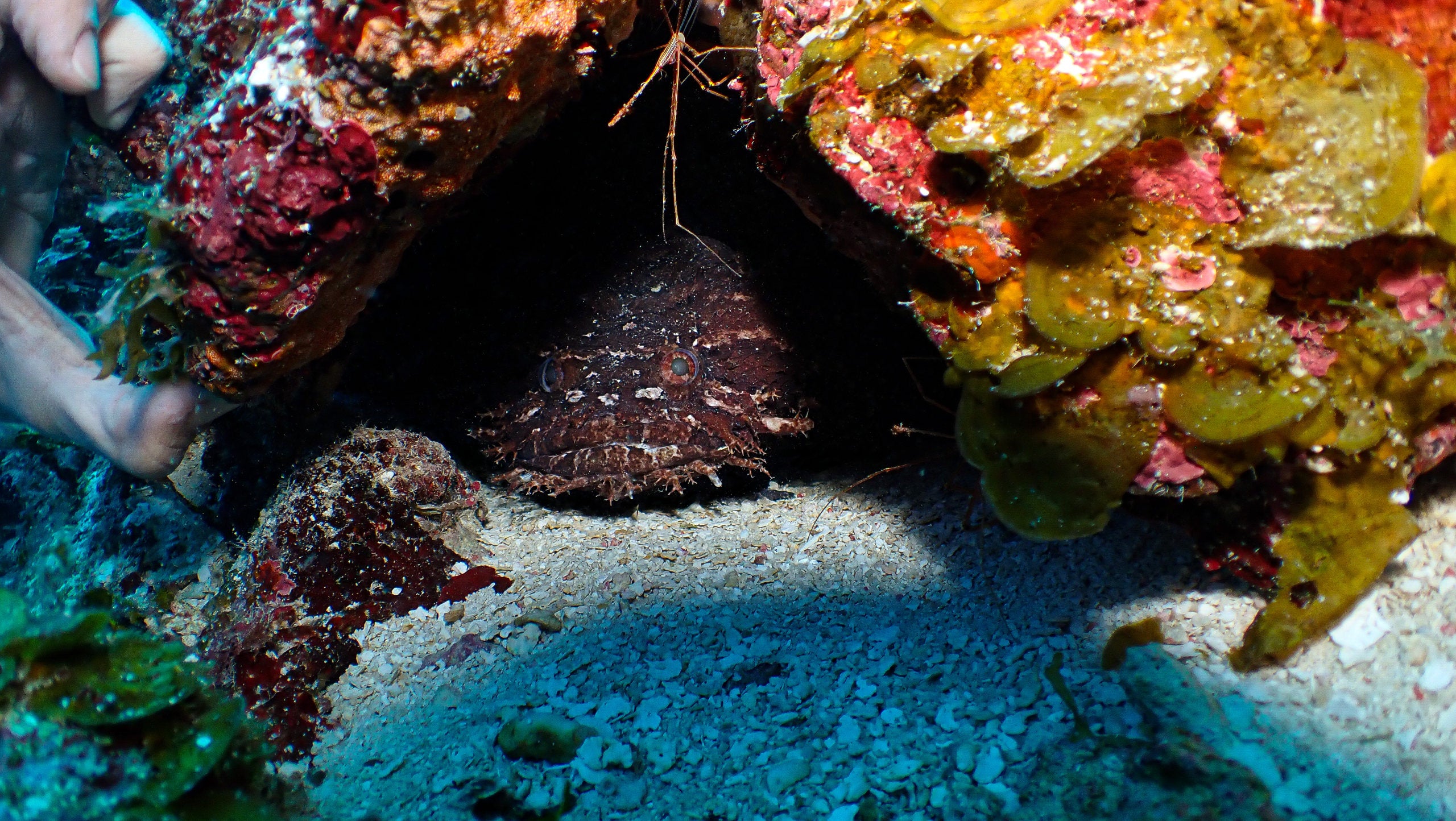
Aquatic Oddball
Michael Corso ’24, aquaculture and fisheries science
At 70 feet below the surface, a rare whitelined toadfish peers out from the darkness to observe a research dive group from URI. Corso captured this photograph of a creature that is endemic to Belize’s Barrier Reef system while on an aquaculture and fisheries science Winter J-term course in scientific research diving. Corso says, “As an AFS major, I focused on biological survey techniques and underwater photography while collecting real scientific data. While the toadfish exemplifies the extent of a reef’s ecosystem biodiversity, warming seas and ocean acidification are chipping away at the natural world’s biodiversity and weakening reefs. The highly specialized animals that rely on these underwater jungles are being impacted directly,” Corso says.
Second Place
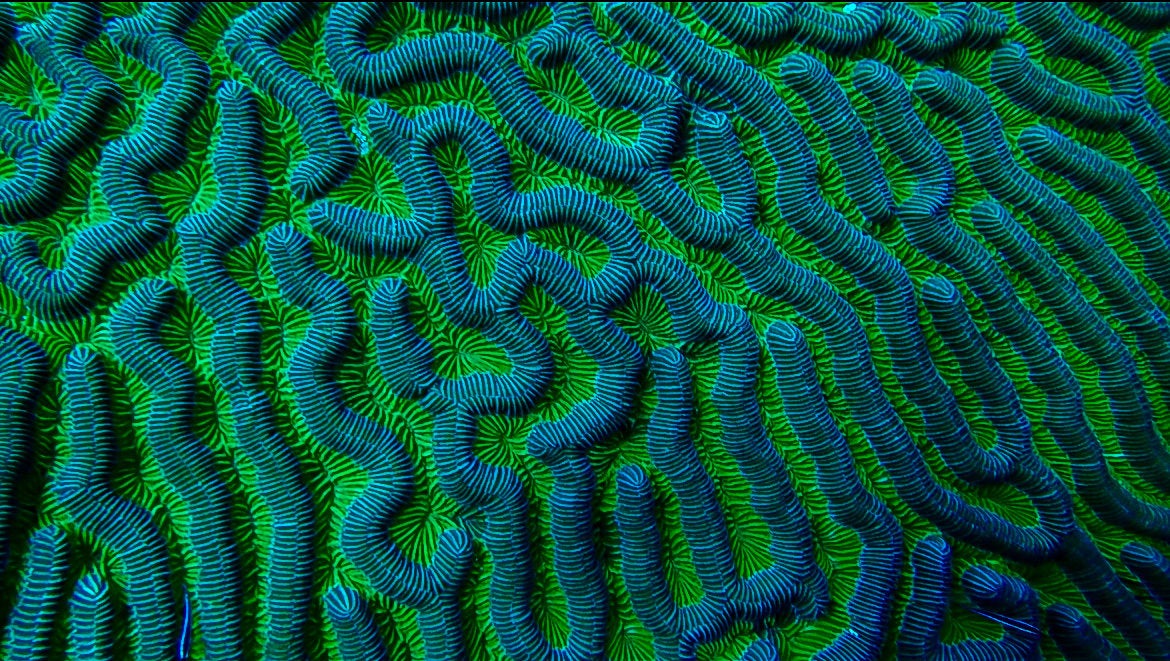
Life Is a Maze
Janelle Mercer ’23, marine biology
Mercer took this photo of maze coral off the coast of St. George’s Caye, Belize, roughly 40 feet underwater, during an underwater archaeology class with Diving Safety Officer Anya Hanson in Belize. Maze coral is a type of stony coral with a photosynthetic dinoflagellate living within polyps on the coral’s surface, providing coloration. The polyps and their corallite walls have a unique twisting, maze-like formation. Mercer, who earned her American Academy of Underwater Sciences Scientific Research Diver certification on this trip, is preparing for a career in marine biology and conservation.
Third Place
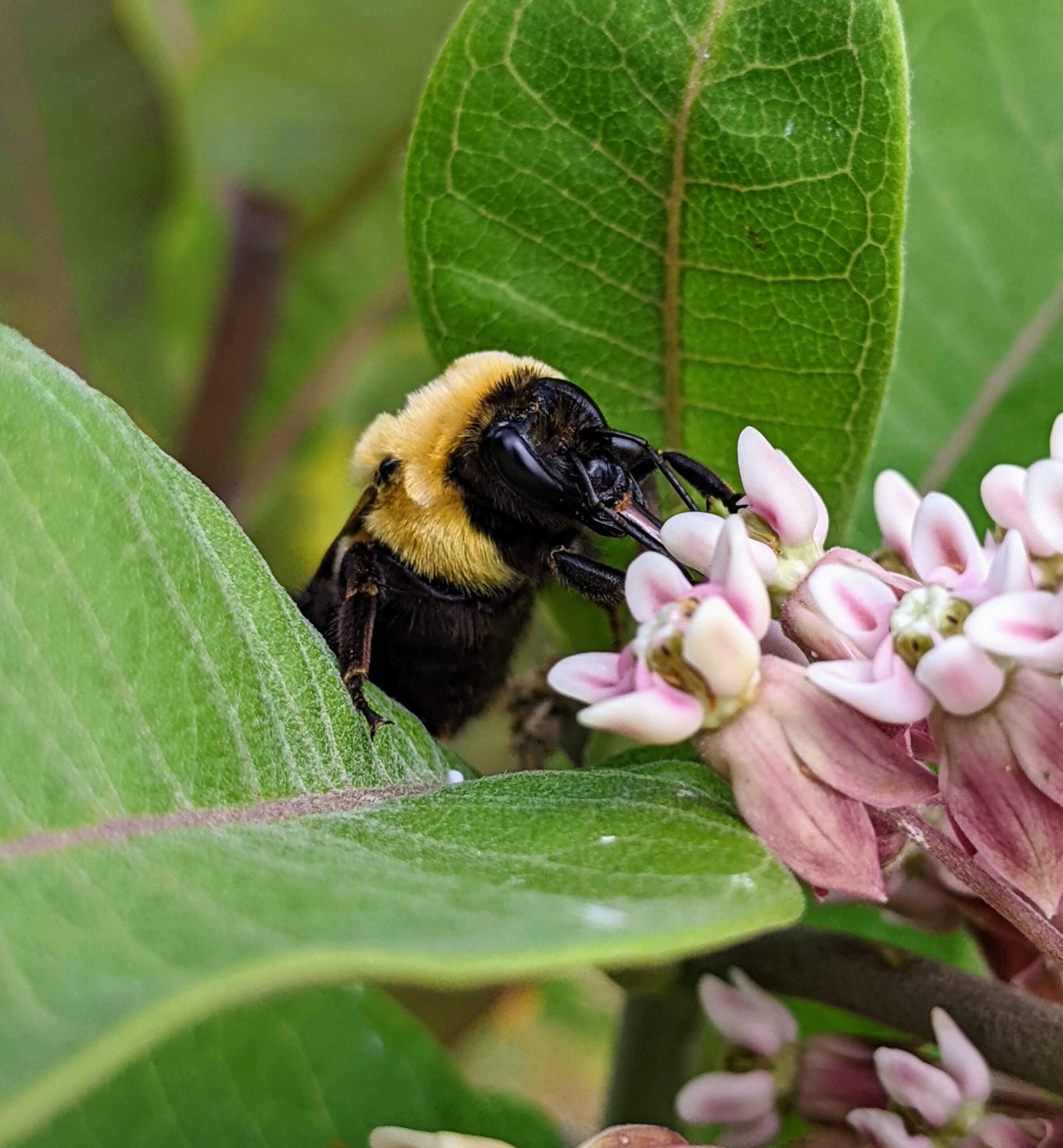
Got Nectar?
Julia Vieira ’21, M.S. ’23, graduate student in plant sciences and entomology
This macro photo shows a brown-belted bumble bee foraging for nectar from common milkweed. The female worker takes a break to re-energize by sucking up the delicious, carbohydrate-filled nectar within the milkweed flower with her long proboscis (tongue). The bumble bee was visiting one of the many milkweed plants within the acres of pollinator plantings on URI’s East Farm. Vieira’s research primarily focuses on assessing bumble bee visitation to various flower species to enhance Rhode Island bumble bee conservation programs by improving recommendations for pollinator plantings throughout the state.
Honorable Mention
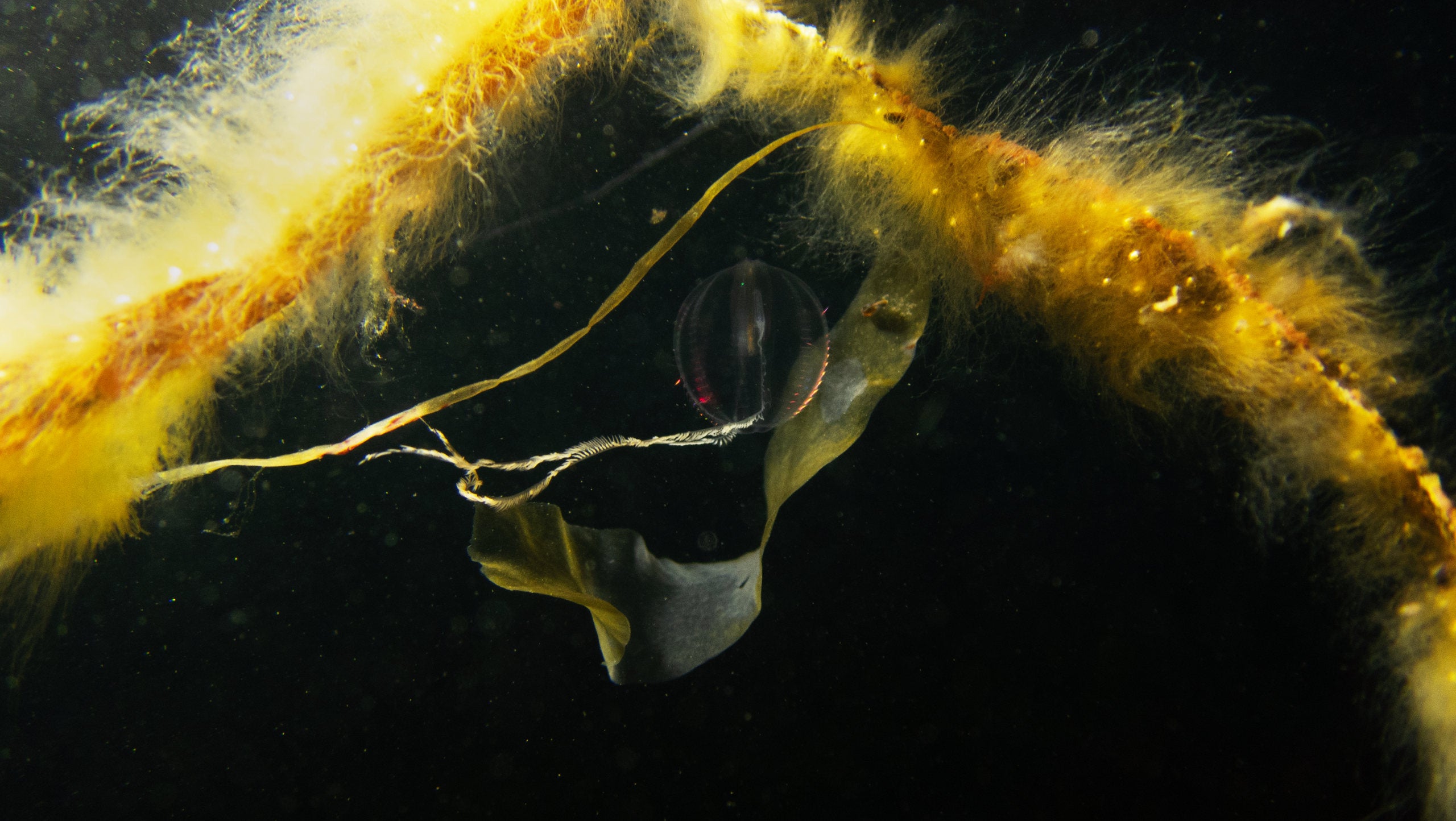
Crossing Under
Olivia Mazzone ’23, marine biology
This photo depicts a comb jellyfish floating among seaweed at dusk off the southeast corner of Conanicut Island (R.I.) “The day that I took this picture was the first time I ever picked up an underwater camera. It was an assignment for a class, a class that was supposed to involve scuba diving except that I broke my elbow two weeks before the start of the semester. So I found myself snorkeling alone, in the middle of April, in a small cove in Jamestown,” Mazzone says. Her first attempts to photograph anything underwater failed, she says, and she longed to get out of the water and go home. “But then when I was finally exhausted, for whatever reason instead of getting out of the water I lifted my feet and let myself go completely. I became part of the tide, and everything in my view became clear,” she says—including this jellyfish, whom she now considers “a dear friend.”
Honorable Mention

Male Bombus Impatiens
Gena Anika ’23, wildlife and conservation biology
This photo is a close-up image of a Bombus impatiens (common eastern bumble bee) face. The yellow patch of hair on the bee’s face signifies it is male. There are pollen granules present on the bee’s face and you can see the hexagonal lenses (ommatidium) in the compound eyes. Anika used a digital microscope to observe the bee closely to help learn bee characteristics and to identify its species and sex for the class BIO 338 Bees and Pollination.
Honorable Mention
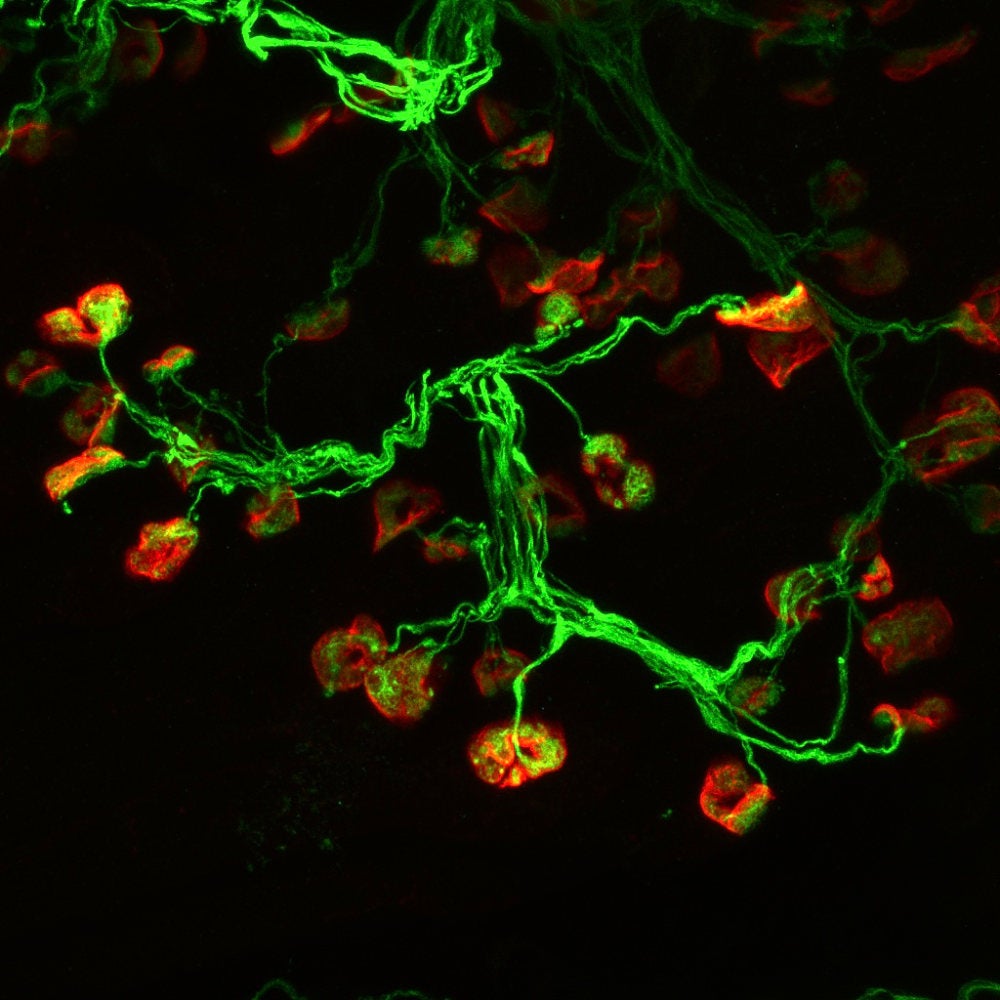
Fluorescence Microscopy of Neuromuscular Junctions
Alyssa Madden ’23, molecular neuroscience
This fluorescence microscopy picture shows the neuromuscular junctions in the calf muscle of a rabbit modeling cerebral palsy. In the Manuel Lab, Madden is working on looking at the differences in neuromuscular development in a rabbit model of cerebral palsy. Using confocal microscopy, researchers can observe how the structure of the neuromuscular junctions is affected by cerebral palsy, in the hope of better understanding this disorder.
